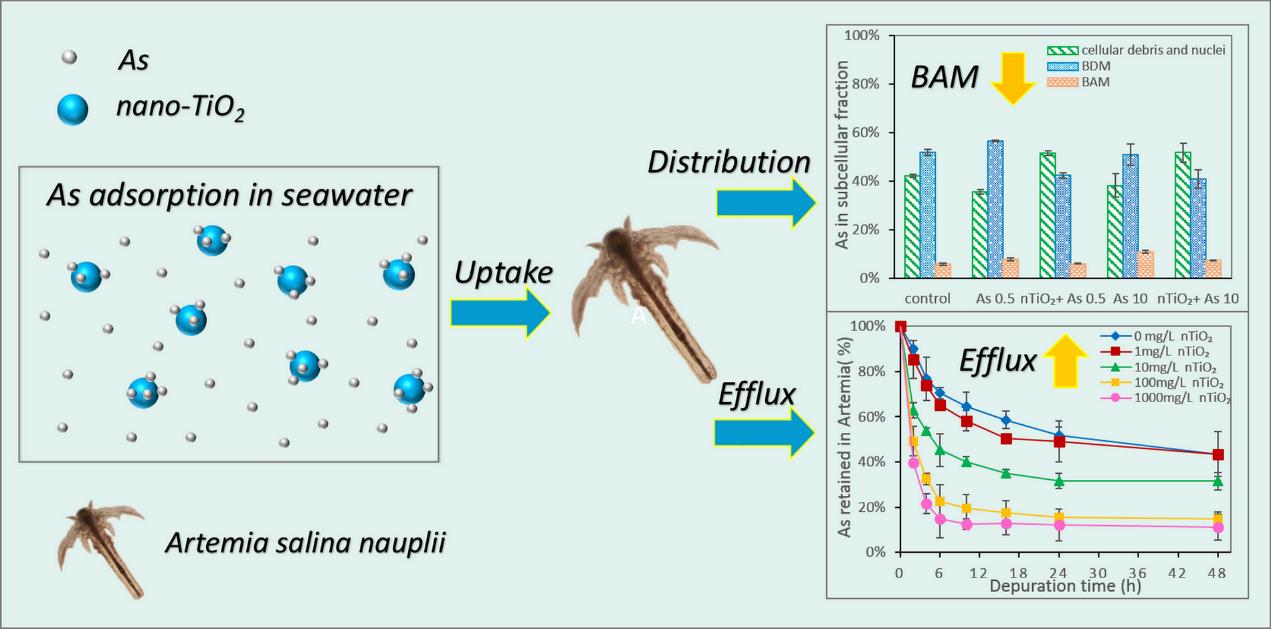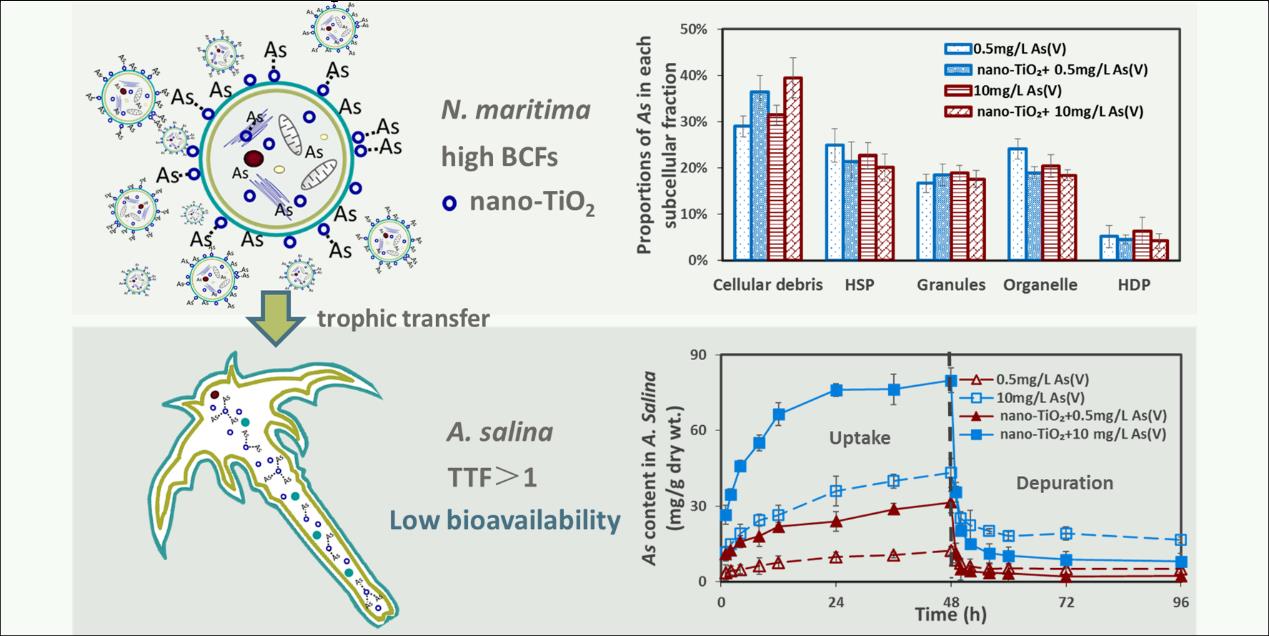Arsenic (As) is a toxic metalloid that exists ubiquitously in nature. It ranks first in the priority list of hazardous substances (2017) by the Agency for Toxic Substances and Diseases Registry (ATSDR). In water, As usually binds to environmental substances (such as nanoparticles and humic acids), and these complexes may dominate As species in aquatic environments. As one of emerging contaminants, titanium dioxide nanoparticles (nano-TiO2) are widely used in many fields, which makes them get more concerns about their ecological risks. Relevant studies indicated that nano-TiO2 possesses a strong adsorption capacity to As because of their large surface areas. Even though previous studies have demonstrated that nano-TiO2 could influence the accumulation and distribution of As in freshwater aquatic organism, little attention has been paid to the interaction of As and nano-TiO2 in saltwater ecosystem, especially to the influence of nanoparticles on the trophic transfer of As in saltwater food chain and As bioavailability in higher trophic level organisms.
Urban aquatic environment and ecology research group (Changzhou Yan’s research team) systematically investigated the As(V) accumulation, distribution, depuration and toxicity associated with nano-TiO2 as well as the trophic transfer of As from Nannochloropsis maritime (N. maritime) to Artemia salina (A. salina) in the presence of the nanoparticles. The results showed that nano-TiO2, as a positive carrier, significantly improved As accumulation in A. salina. But at the same time, nanoparticle could enhance As efflux and shorten the gut passage time of the chemical in organisms. Furthermore, As distribution in biologically active metal (BAM) fractions significantly decreased for the groups treated with both As(V) and nano-TiO2, while the fractional percentage of As increased in cellular debris. The results indicated that As adsorbed by nanoparticles can be intercepted by cell membranes, and the bioavailability of As in A. salina is weakened; We also found that nano-TiO2 could significantly facilitate As sorption on N. maritima (the food of A. salina) within an exposure period of 24 h, and this sorption subsequently led to higher As trophic transfer from the algae to A. salina according to trophic transfer factors (TTFAs+nano-TiO2 > TTFAs). However, after 48 h of depuration, the retention of As in A. salina fed As-nano-TiO2-contaminated algae was even lower than that in A. salina fed As-contaminated algae at the same exposure concentrations. This result indicated that the increased food chain transfer of As in the presence of nano-TiO2 can be explained by adsorption of As onto nano-TiO2 in contaminated food (algae), but the bioavailability of As in A. salina is reduced after the introduction of nanoparticles. The study could facilitate an overall evaluation of the combined pollution of nano-TiO2 and As(V) in saltwater environment.


The results of the studies are published in the international famous journal in the field of environment: Environmental Science: Nano (Changzhou Yan*, Fan Yang, Zaosheng Wang, et al. Changes in arsenate bioaccumulation, subcellular distribution, depuration, and toxicity in Artemia salina nauplii in the presence of titanium dioxide nanoparticles 2017, 4, 1365–1376) and Aquatic Toxicology (Fan Yang, Liqing Zeng, Zhuanxi Luo,et al. Complex role of titanium dioxide nanoparticles in the trophic transfer of arsenic from Nannochloropsis maritima to Artemia salina nauplii. 2018, 198: 231-239). This study was funded by the National Nature Science Foundation of China (21577138, 21377125, and 41271484) and Technology Cooperation Program of China (2011DFB91710).